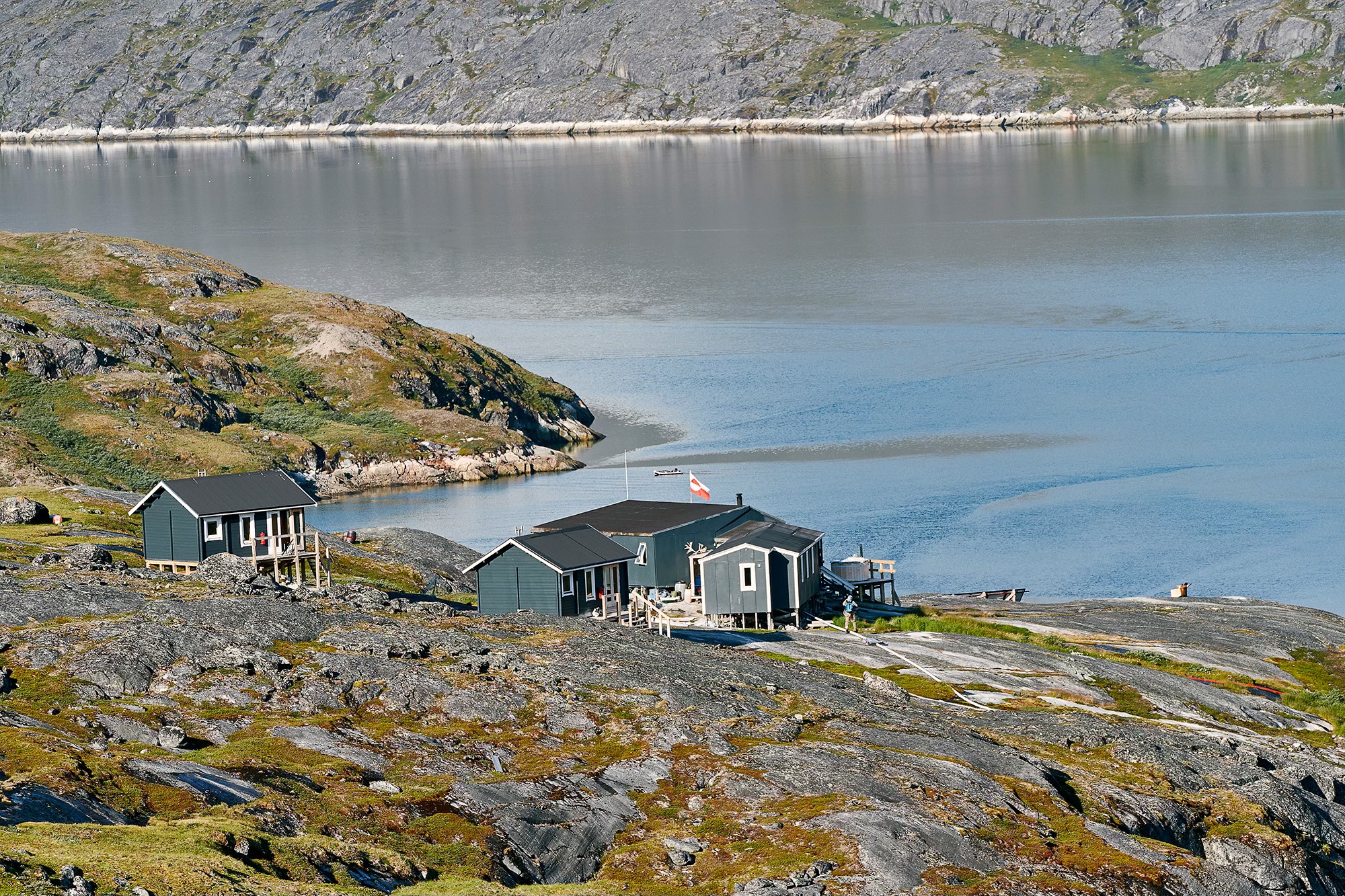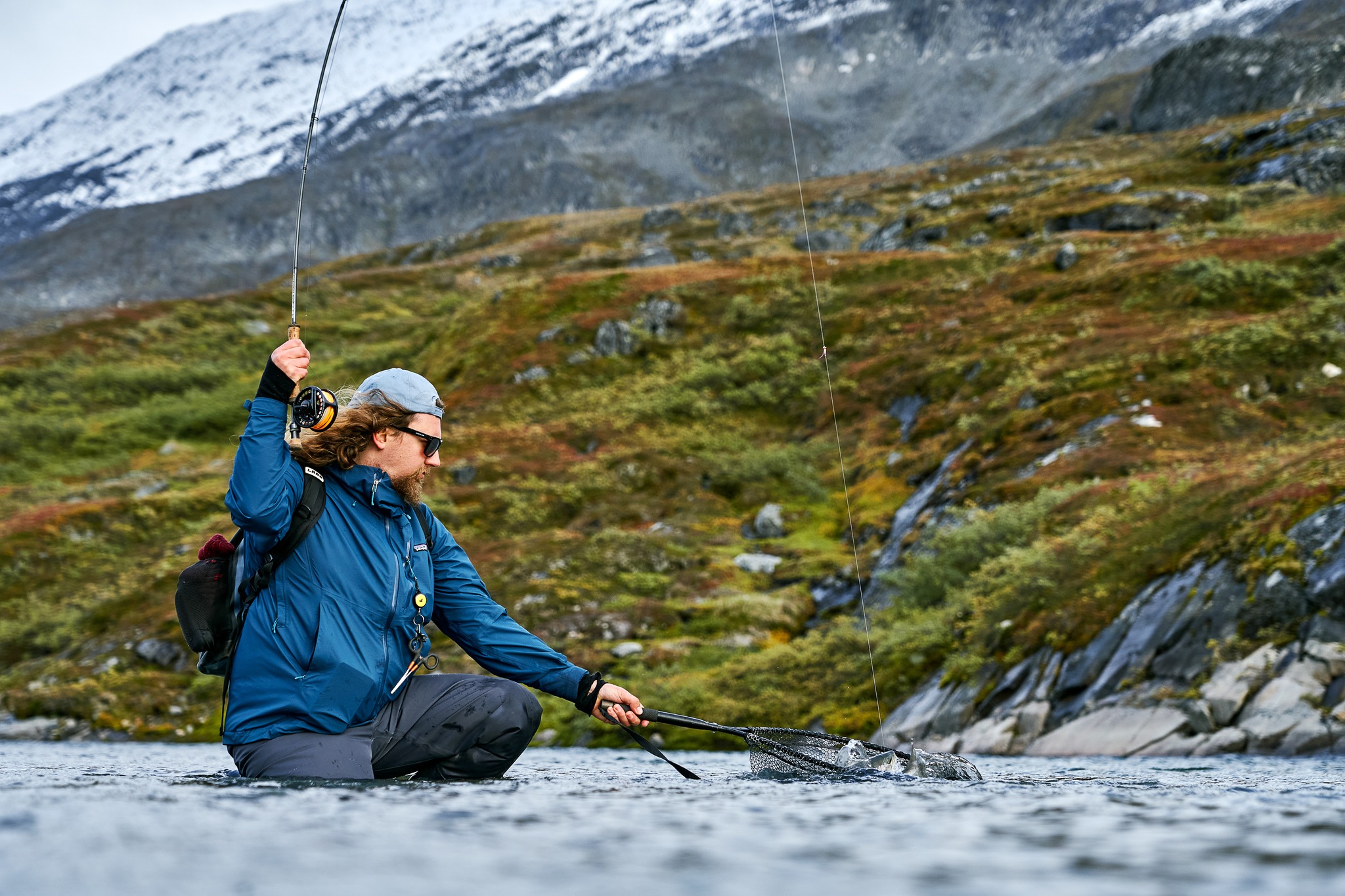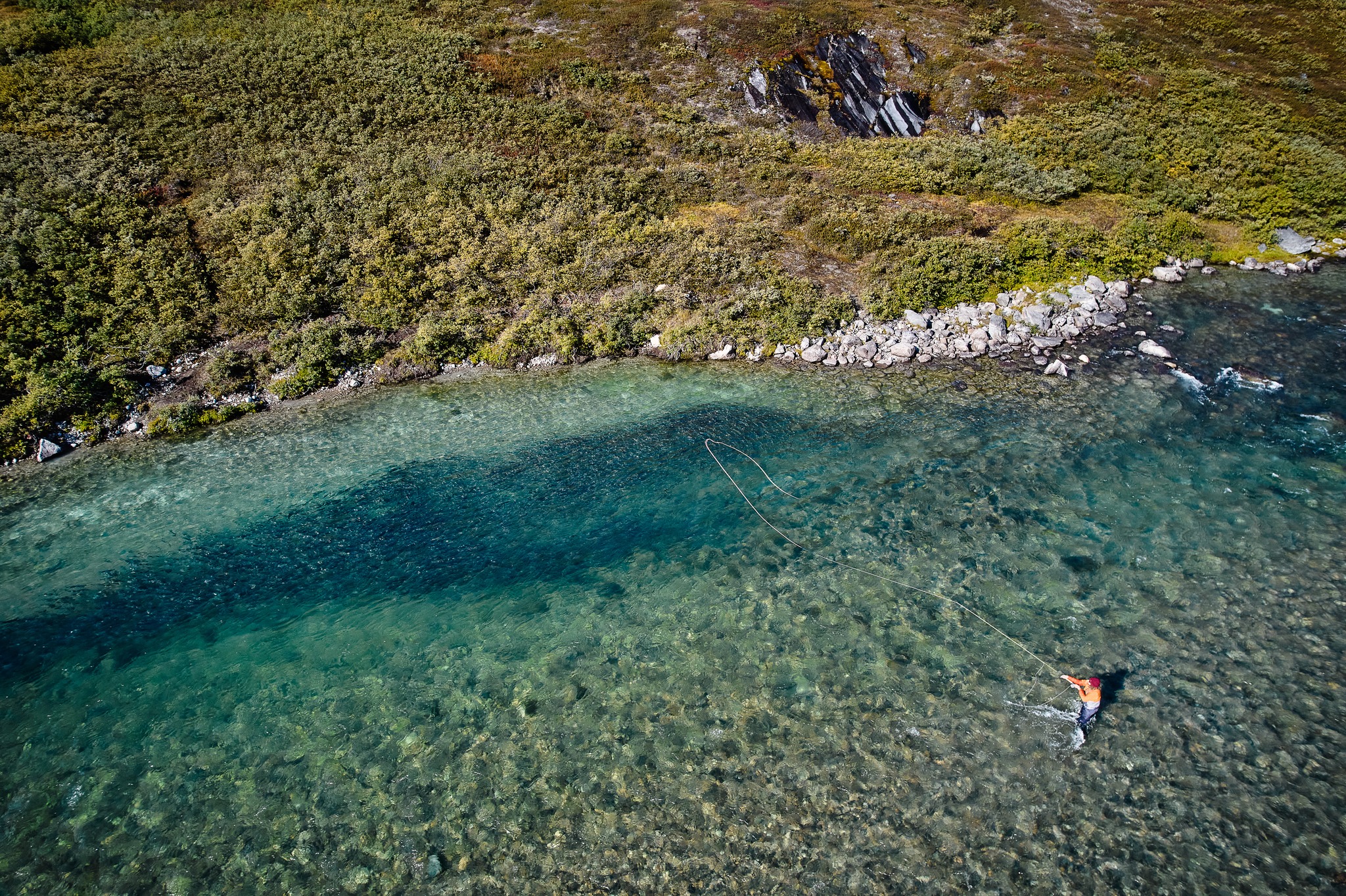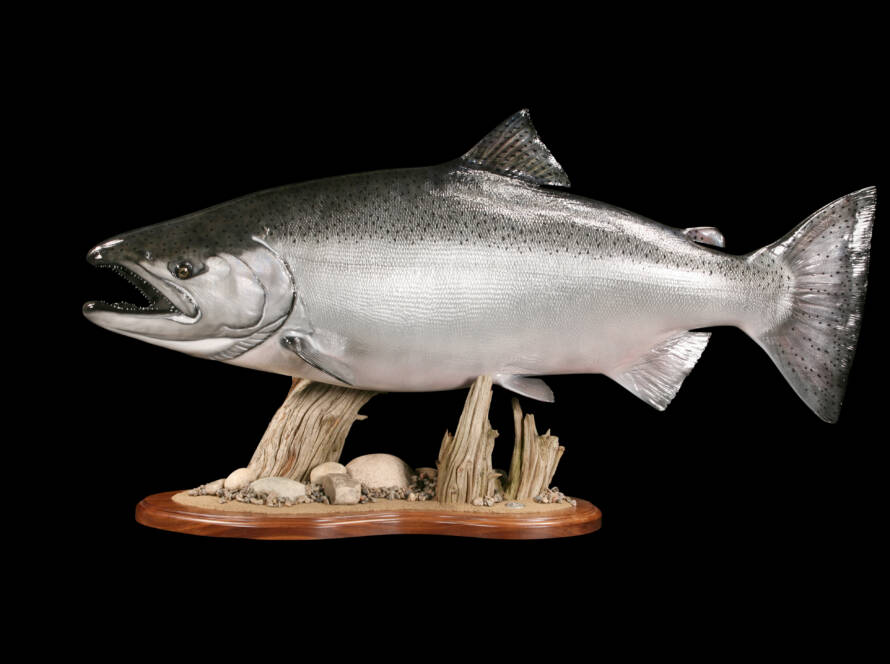Kangia River Lodge was originally constructed by a Norwegian businessman in the late 1990s. The fishing on the Kangia was outstanding from the start, but the business model—focused heavily on the Norwegian market and mixing spin and fly fishing—proved less than ideal. Running a fishing camp in such a remote spot was also ahead of its time. Ultimately, the lodge was sold after a few years of operation.
BY THOMAS SØBIRK and MORTEN HAVE

Fast forward 14 or 15 years, and we were approached with the opportunity to manage the fishing program on the Kangia River. The new owners were struggling with the operation, and since we had already established our fly fishing camps on Erfalik, Napiarissat, and Equalugsugsuit (Camp North), they offered us this fourth, remarkable river to add to our portfolio.
It was tempting, but due to logistical constraints, high costs, and the lack of demand for a fourth camp, we had to decline. Our partnership agreements also didn’t allow us to collaborate with others at the time.
In 2017, a new operator finally brought Kangia River’s world-class fly fishing into the spotlight. We quickly realized what we had missed out on—it became clear that the Kangia was one of the best, if not the best, Arctic char rivers on Greenland’s west coast.



For us, Kangia was “the one that got away.” Until 2023, when things took an unexpected turn of events.
To cut a long story short, the concession came out for application and this time it didn’t get away.
In the fall of 2023, the lodge was acquired and we were now all in and fully committed on the great Kangia River. But it was too late to prepare for the 2024 season, as the lodge required significant refurbishment and the area needed a major cleanup.
“Kangia is bigger, wider, and faster—more reminiscent of a salmon or steelhead river than any char river I’ve seen”.
We rented out five weeks of the season to the former operator, allowing them to run one last short season, while we conducted two scouting trips—one early in the season, and one later. The goal was to familiarize ourselves with the river and its surroundings to prepare for full operations in 2025.









The First Scouting Week
From the moment we followed the trail from the lodge to the first overlook, I was in awe of the majestic Kangia River. Its long, winding course from the waterfall down to the fast water below was truly a sight to behold. After hearing so much about this river for years, it felt humbling to finally stand on its banks, rod in hand.
The first major difference between Kangia and other Greenlandic rivers is its sheer size. Kangia is bigger, wider, and faster—more reminiscent of a salmon or steelhead river than any char river I’ve seen. It’s a wonderful addition to our Flyfish Greenland program.
On our first afternoon, with clear blue skies and no knowledge of how to fish the river, we only caught a few nice chars but by the end of the second day, we had – quite literally – gotten the swing of it. The river was perfect for swinging streamers and by doing so we found the first real success.



Most of the fish we caught were fresh from the ocean, and they were coming in great numbers. The first resting pools would fill with freshly arrived fish every morning, and throughout the day, more would arrive, stirring up the already-present char.
Paulo had such success fishing with nymphs that we named a prime fishing spot upriver “Paolo’s Hole.” Josh excelled with deep-diving pearly white streamers, continuing his winning streak with this fly from Camp North and Erfalik the year before. The three Irishmen in our group, always the life of the dinner table, had success with nymphs, foam flies, and streamers alike. The rest of us enjoyed getting acquainted with this spectacular river.
Thomas and I had brought light double handers, known as trout spey rods, and though it certainly wasn’t necessary with a double hander to fish the Kangia well, it was so much fun that we hardly fished our single handed rods during the week.
By the end of the week, we had learned a lot about the Kangia River, but there’s still much more to discover. As Ian’s jokes got better and our little scouting group grew tighter, I felt a tinge of sadness knowing I wouldn’t return to this river for another year.
The lodge, however, was in need of some serious work. While the two new cabins were great, the main building was in dire need of refurbishment. Thankfully, our partners had already planned for a crew of carpenters, cleaners, and handymen to come in at the end of the season to make the necessary upgrades.

Second Kangia Scouting Week
On the first day, we explored the first half of the river, and it quickly became clear that there were many fish. Walking along the river, you could see fish holding in the swift currents and deep pools. When we started fishing, we immediately caught many Arctic char, including a few larger ones fresh from the sea. Knowing that the run of fish starts in July, we were amazed to find fresh fish still entering the river in September.

“We saw large fish, between 70 and 80 cm, holding in the pools as we walked by”
Day two began with a hike to the waterfall. From camp, it takes about 2 hours to reach the falls, which mark the end of our fishing grounds. The waterfall stops the fish from migrating further upriver, so the pools downstream were filled with fish. One of the guests, Igor, an expert in nymphing, caught many fish in the waterfall pool and in the fast rapids below. He also managed to hook some big fish on the nymph, while the rest of the group averaged smaller fish on streamers.



Due to clear skies and sunny weather, we struggled to connect with the large fish that Kangia is known for during the first couple of days. From our experience at other camps, we know that sunny and warm weather tends to reduce the average size of the fish caught, and this trip was no exception. Nevertheless, the fishing was still good, and we had great topwater action skating a foam fly in the Hollywood pool—Kangia’s most famous holding pool. Hollywood was packed with both fresh and colored fish that couldn’t resist the wake of the foam fly.
The following day, we were joined by Inunnguaq, the son of our Greenlandic partner Ole. Inunnguaq is a young and dedicated fly fisherman, eager to learn, especially about Arctic char. It didn’t take long before he hooked his first char of the day—a beautifully colored male that he expertly fought with great enthusiasm. If he continues on this path, he’ll be guiding clients on the river in a few years. Having the young generation appreciate Greenland’s unique resource for fly fishing must be the best way to preserve them.
Meanwhile, the rest of us decided to try the largest flies in our boxes to see if we could trick some of the bigger fish. We saw large fish, between 70 and 80 cm, holding in the pools as we walked by, so we experimented with different techniques to lure one of these trophies. When I tied on a big brown trout streamer, I had my doubts that the fish would commit to such a large meal. However, the chars displayed aggressive behavior toward the big flies, instantly increasing the average size of the fish we were catching.


Later in the week, the weather changed for the better. Clouds rolled into the valley, which immediately impacted the fishing. It was as if the larger fish suddenly became active, and soon we were all catching fish between 60 and 70 cm. Many of these were colored fish that had previously been difficult. But that day, they suddenly turned on, and we caught these stunning fish on both bright nymphs and colorful streamers throughout the river. Igor even hooked a trophy fish near the waterfall, though, unfortunately, it came off after an acrobatic jump.
This trend continued the next day when our Scottish guest, Callum, caught a magnificent silver char in the lower part of the river. It’s astonishing that big fish are still running this late in the season. The mix of colored and silver Arctic char in such numbers is remarkable and truly special. You can sense that this is an untouched wilderness with a native stock of fish that likely hasn’t changed for hundreds of years.
On the last day, we fished until the afternoon before heading back to civilization. Our conclusion is that the Kangia River is an extremely productive and healthy ecosystem with a large population of sea-run Arctic char. A new generation of fish arrived in huge numbers during the week, so the fishing will undoubtedly continue to be spectacular in the years to come.
For more information, please refer to www.flyfishgreenland.com











